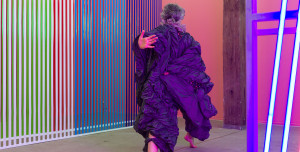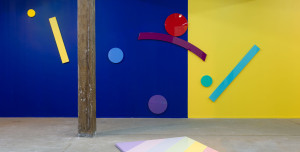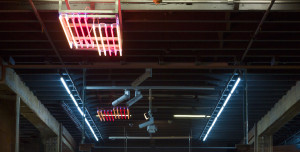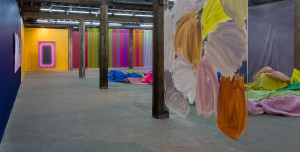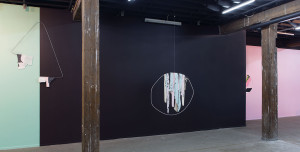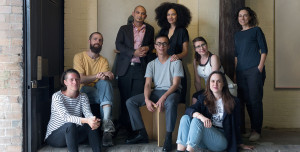Exhibition
Superposition of three types
10 Feb – 17 Apr 2017

Artspace
43–51 Cowper Wharf Roadway
Woolloomooloo NSW 2011
Sydney Australia
featuring performance by Shelley Lasica Thursday 9 February, 6 – 8pm
Featuring newly commissioned and recent works, Superposition of three types brings together 13 living Australian artists across generations dealing broadly with the legacy and vernacular of colourist abstraction.
Painting and its visual vocabulary — including form, colour, scale and surface — underlies all the work in the exhibition, yet here takes expanded form in other mediums and materials. Some pieces play with the physicality of painting — both as material and action — while others set aside traditional methods of production and display to consider its sculptural and visceral potential. The physiological effects of colour are key, as is an engagement with space and architecture, so that the works bleed and blur across the Artspace galleries creating connectivity between practices in a layered, immersive environment.
In quantum theory, superposition is a term that describes the possibility of matter existing in all states simultaneously, with only our attention fixing it to one form or another. So the title speaks to the different registers of the exhibition, with ‘types’ of artistic practice explored in parallel.
In addition to the ten colourists exhibited, three artists — Julian Day, Shelley Lasica and Spence Messih — working respectively with sound, movement and text intervene and activate the gallery at different points throughout the exhibition. These additional works engage with the temporal and the bodily, the sensorial and conceptual, so audiences experience an active and evolving space.
Superposition of three types resists an often-oversimplified appreciation of abstraction as purely aesthetic and acknowledges its rich avant-garde origins. Over the last 150 years artists have turned to abstraction as experimentation and resistance, seeking to escape the banality, predictability or materialism of the observable world, and using colour and abstract form to explore the intuitive and non-rational, to connect to the spiritual and metaphysical. The exhibition aims to highlight the ongoing relevancy of abstraction as it continues to offer perspectives on the complexities of world affairs and resist the increasing grasp of commercial culture.




